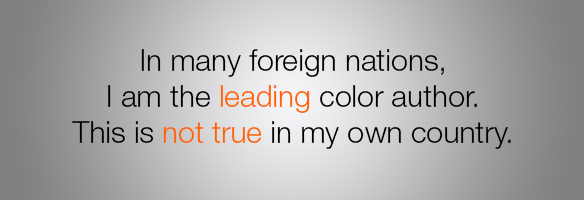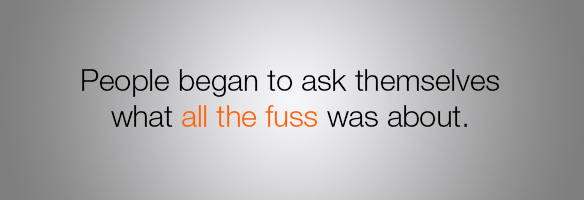An Interview With Dan Margulis
I’ve had in mind to interview my teacher and friend Dan Margulis for quite some time and I sent him a request at the beginning of April. His reply was positive, as I would expect knowing how available he is, but the devil conspired against me and I ended up putting together the questions only a few days ago. I then left for a brief vacation and the replies arrived as I was trying to get some tan while actively looking after my 6-years-old son – a contradiction in terms, as you may gather. So, here it is with a slight delay, but thought-provoking and honest as I hoped it would be. Also the interview is full of Dan’s well-known wit.
The following deals with the PPW, ACR/LR vs PS, the current state of color management and the likes. Before we start, the PPW panel is not compatible with the most recent Photoshop release (CC 2014), but you may stay tuned with the updates here. More info on the PPW can be gathered on the official website of the latest book by Dan Margulis and also on the Italian website where the video-course (in Italian) on the PPW is available.
Enjoy – and heartfelt thanks to Dan!
1. It’s been more or less one year since you published your latest book “Modern Photoshop Color Workflow”, based on the PPW. Have you had enough feedback to judge how it’s been received by the public?
The brief answer is very well indeed, but the question should be expanded somewhat. In order of increasing difficulty, people have access to the PPW panel and actions, the PPW workflow itself, and the book.
The PPW panel, largely developed in Italy, has been extremely popular, and not just because it’s free. It is hard to know how many people have adopted most or all of the workflow without buying the book, but it seems like a lot. As for the book itself, this reaction found online is about the same as for any of my other books: the readers find it challenging, but the most in-depth analysis in the field.
The biggest surprise has been the discovery that I have far more readers and followers outside my own country than within it. Saying that this is because the rest of the world has a bigger population than that of the United States is not an explanation. Most American authors in the field sell the majority of their books at home. And in many foreign nations, I am the leading color author. This is not true in my own country.
2. As you know, there is a widespread tendency to favour Adobe Camera Raw over the “old” Photoshop adjustments, and sometimes the use of Lightroom rather than Photoshop when retouch and compositing are not needed is advocated. It is true that Lightroom offers batch capabilities which are awkward to implement in Photoshop, to say the least, but I don’t think that’s the main reason for this shift. What do you think about it?
Like most of my readers, I am interested in explanations of why certain approaches are better. I am not so interested in explanations that a certain approach should be used because it is newer than others, and I am especially disinterested in hearing that I should use it because all fashionable people already do so.
In Chapter 14 of Modern Photoshop Color Workflow, I outline a method that exploits the batch-processing capabilities of these raw modules. It suggests that before starting work on a group of raw images, they be batch-opened in several different ways. With storage space and computing time being nearly free at this point, there’s little downside to this approach and a lot of advantages. For example, some images benefit from more highlight recovery. For another, I recently returned from a trip to Newfoundland. Lighting conditions in the far north often resulted in bluish casts. I therefore processed one batch (out of four) with an artificially warmer white balance. Sometimes I would use that version and if not I would throw it away, just as I would with the version with enhanced highlights. In this way, I saved myself time and got better quality than if I had tried to figure out the optimal way to acquire each image.
Lightroom has also some useful storage/filing features. But as far as basic color correction is concerned, these two Adobe modules are not in Photoshop’s league, at least not yet.
3. One of the most common discussions at FESPA in Munchen last May was slightly schyzophrenic. On one hand, there is a common disbelief that color management be the real answer to the most common printing problems, especially variation on press. On the other hand, there is a complaint that no standards (as SWOP or FOGRA, to name a couple) have been set for digital printing yet, while the “new way of printing” is quickly taking over. Comments?
When it was suggested that excellent color management was capable of curing cancer, people believed it. When it was stated that it would also be the solution to global warming, some people believed that, too. But when it was announced that good color management would allow the Italian team to reach the second stage of the World Cup, it was too much even for the most credulous, and people began to ask themselves what all the fuss was about.
A prominent printing standards organization has as its motto “variation is the sum of all the variables”. That is as true of color management as it is of printing. We all know that certain printing firms are less reliable than others, which is to say, more variation is to be expected in their product. Given two printers who nominally perform to the same specification, except that one is known to hit that specification precisely and the other varies from day to day, only an idiot, or a color management consultant, would insist on using the same approach for both. Some techniques maximize the chance of a perfect result, and others minimize the chance of something really bad.
As for why no standards have been set, it is the old story of, “I make the rules, you do the work.” As I understand it, the printers are supposed to implement the standard, and the printers are to go to the expense of educating the client, and the printers are to take the blame if the client isn’t satisfied. In my opinion, if printers are to be asked to do something that has only costs for them and no benefits, I would prefer to ask that they be responsible for cleaning my office, or making sure that my car is in good running condition. That way, no one but me will be upset when they refuse.
4. Which directions do you think we should explore to bring color correction as it is now into the new decade? Does it all come down to more powerful adjustments and filters running on more powerful computer or is there something else we should explore with the instruments we have now?
The use of personal computers for serious color correction is around twenty years old. Like most young adults, although physical maturity has come, there are still unexpected new obstacles, such as the advent of photography on cell phones, or the need to process more and more images for a single project. And most young adults are vulnerable to temptation. Serious advances in technique may come, but they are less likely than in the past. Meanwhile, for every real advance, there will be ten others that are not advances at all but will be hyped as being revolutionary, and implications will be spread about that if we don’t buy into them we are neanderthals. It is up to the young adult to separate real progress from salesmanship and vaporware.
For these reasons, the most important instruments we have are our eyes and our brains.
5. In the last three years some sort of color correction community has been forming in Italy, thanks to the joint efforts of several people you know well. I, for one, am trying to introduce the concepts of color correction at graduate level at school, because most people still do not know the basic principles. Which kind of advice would you give to the young (and to the young at heart!) who want to become proficient in this field?
That if it were easy, everyone would be able to do it; that if technology could do it, there would be no need for human intervention; that falling in love with images is dangerous because they will not love you back; that we dislike certain images because they were corrected badly, but certain others because they do not appeal to our personal taste, and woe betide him who cannot distinguish the two cases; that almost all techniques eventually get replaced by better ones; and that creating beautiful images is exciting and fulfilling, but it solves few of the serious problems facing our world.
6. Any plans for the future? Will we see you back in Italy sooner or later, possibly in a public occasion?
My feeling has always been that I can be run over by a bus at any moment, and I would not wish to feel that I had made poor use of the time I was given. This implies much travel. I do not wish to be in the position of some of my friends who would have liked to have seen the world, but are no longer physically capable of it.
I will never regret my choice of profession, because it has given me the opportunity to see so much of our planet, and especially to share the experience with local people. Few tourists can have the opportunity to see a country as its natives do. My Italian friends have given me this opportunity. Although I don’t know when, I will return, because I love them, even more than I love their country.
Tags: color management, correction, future, Margulis, PPW
Trackback from your site.








Comments (3)
Richard Kenward
| #
I very much enjoyed Dan’s wit and thoughts in this interview just as I’ve enjoyed reading his books on colour correction over the years.
Reply
Alcides Pomina
| #
Thank you for the interview with Dan. After learning the basics of PS quite a few years back I was frustrated by the lack of color correction instruction in the institution of my schooling….but then DM books came to my attention . They were and are hard to read but at the end I was rewarded with an understanding of what is involved .
To Dan and you and the rest of the team THANKS from the bottom of my heart.
Reply
MO
| #
Alcides, your comment is interesting: some people in Italy claim that everyone at a basic level is proficient with curves and that these techniques are obsolete. The actual truth is the opposite: you can see all kinds of tricks supposed to “correct color” but almost none of these is based on the very sensible workflow which boils down to “evaluate, correct, check” and very few people use curves. Such claims are of course marketing for something else. Curiously, one of the students in one of my courses had used Color Balance for 15-odd years, and only that. I can’t seem to make it work properly, because it affects highlights, midtones and shadows in a very curious way, but she could do a lot. So it’s also a matter of getting used to some tool rather than another. I know for sure she uses Curves now, though. 🙂
Reply